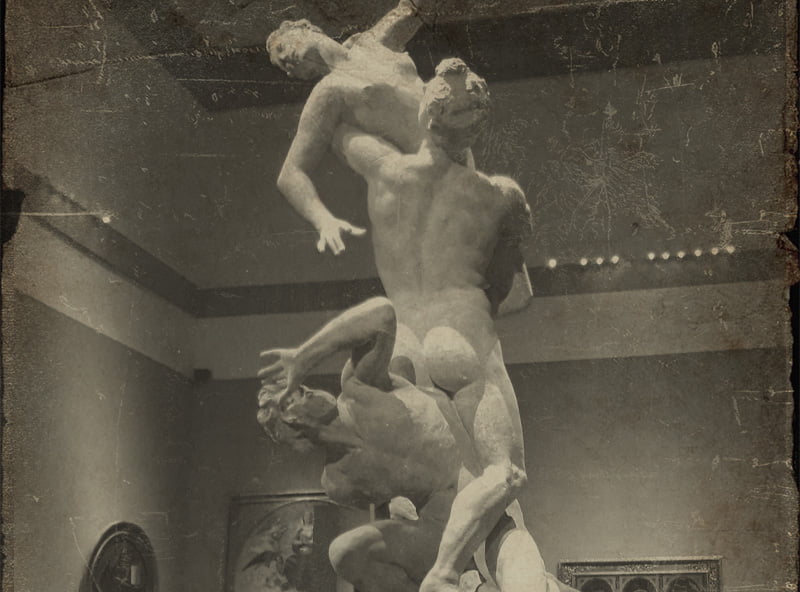History of the
Accademia Gallery
Accademia Gallery History
The First Collection of Art
The Galleria dell’Accademia, also called the Accademia Gallery, in Florence has housed hundreds of works of art since 1748. Although it has undergone many name changes and its primary function, the artwork has always remained. Before 1748, the physical building was two structures: the Hospital of San Matteo and the Convent of San Niccolò di Cafaggio. Grand Duke of Tuscany Pietro Leopoldo organized for different art schools to join together and form the Accademia di Belle Arti (Academy of Fine Arts).
The new school was built by renovating the hospital and the convent. The newly renovated space provided great lighting for young art students to practice their craft. The school offered high-quality models for the students to copy and learn from. These works of art originally meant for study purposes, comprised the first collection of artworks in what later became the Accademia Gallery. This first collection contained one of the most celebrated works of art in today’s museum: the 1582 model of the Rape of the Sabine Women by Giambologna.
Growing the Displays
Some of the finished copies by the art students were kept and put on display. Specifically, the students that won awards for their talent were given the opportunity to have their work hung in the halls like all the models from the great artists they had studied.



In 1786, Leopoldo called for the paintings he had collected from the churches he had forcibly closed to be added to the Accademia di Belle Arti’s collection. Napoleon Bonaparte, in 1810, followed suit during his command of Italy. Both leaders added religious artwork to the academy’s collection. Due to the rising number of artworks on display in the halls of the school, academy President Antonio Ramirez of Montalvo made the executive decision in 1841 to have all the art re-ordered chronologically. Thus the halls became a visual representation of the evolution of art in Florence.
Italy, prior to 1861, was made up of independent states. The Kingdom of Italy was formed with the Italy Unification. For a short stint (between 1865 and 1871), the metropolitan city of Florence was the kingdom’s capital. During that time, Accademia’s reputation grew, and it became a major museum of art.
The Arrival of the David
Michelangelo Buonarroti’s celebrated statue, David, came to the Accademia in August 1873 after major renovations to prepare the museum for the renowned statue. Architect Emilio De Fabris completed the new design. Unfortunately, the museum renovations were not yet finished by the time David arrived at the museum doors. For that reason, David was not able to be put on display immediately. Instead, the magnificent marble statue hid in wait for nine years behind wooden scaffolds.
A Birthday Celebration
The 400th birthday of famed sculptor Michelangelo occurred in 1875. In his honour, the Galleria dell’Accademia was chosen to host a special exhibition of copies of the artist’s most celebrated works because it housed the single most famous sculpture by Michelangelo in Florence. The renovations on the Tribune hall (where the David statue was to be placed) were still not yet completed. As a means of hiding the unfinished arches and ceilings, museum workers hung curtains that draped across the ceiling to hide the unsightly, ongoing construction work.
Big Changes, Small Changes
Throughout all this time, the Accademia di Belle Arti, the art school associated with the museum, continued to grow and evolve with time. Unfortunately, the museum and the school did not grow together. The museum hoped to preserve art’s history, and all the while, the school began teaching more modern schools of thought. This conflict of principles confused and ultimately led to the museum’s decision to do a final split between the school and its contemporary art. Finally, the museum was able to be a place to conserve Florence’s artistic history and nothing more. After a few more renovations in the halls creating small rooms, the building finally came to look the way it does today.
The Accademia di Belle Arti still exists today in the next-door building but is no longer affiliated with the museum.
The New Favorite
A sudden new-found appreciation for the artwork of Botticelli made the Accademia famous once again amongst visitors. These 15th-century works of art were given their own room in the museum. It gained equal fame and reputation as the David in the Tribune in the hearts of the museum visitors.
Changing Names
For a time, the museum, no longer affiliated with the Academy of Fine Arts, was simply known as the Antique and Modern Gallery. However, this name was not to last for long. In the early 1900s, many of the modern works of art were transferred to other museums, most notably to Palazzo Pitti, when it was converted from a residential palace to a preserved museum. Many other masterpieces were transferred to the Uffizi Gallery. By the end of these trade agreements, the museum suddenly found itself short on “antique and modern” works of art, thus making the museum’s name obsolete. The gallery needed a new name. Two names were tried for size: The Michelangelo Museum because of the significant number of Michelangelo works in its collection and the Accademia Gallery – a nod to its former association with the Accademia di Belle Arti. As you may have already guessed, “the Accademia Gallery” stuck.
Preserving History
A handful of statues known as the Prisoners are leading up to the Tribune, where the David by Michelangelo can be found. For many years, these statues were merely models, not the final creation. However, in 1909, Michelangelo’s real Prisoner statues were transferred from their unsheltered home in the Boboli Garden to the safety of the Accademia Gallery. Statues, when exposed to the elements for long periods of time, can become damaged. Even gentle tremors from beneath the Earth’s surface can begin to fracture and deteriorate marble statues. It was for this reason that David was transferred to the Accademia. The nude Prisoners were also brought indoors for their protection.
Late Edition
The Galleria dell’Accademia is still growing in its efforts to preserve Florence’s rich history of the Arts. A 7th hall was added to the Accademia museum when a new collection of antiques arrived at the Gallery doors. Instead of the usual paintings and sculptures, this new collection was based around musical instruments. The History of Musical Instruments hall opened in 2001. The collection came from the neighbouring Luigi Cherubini Conservatory and consisted of musical instruments and paintings depicting music dating back to the Medici dynasty.




